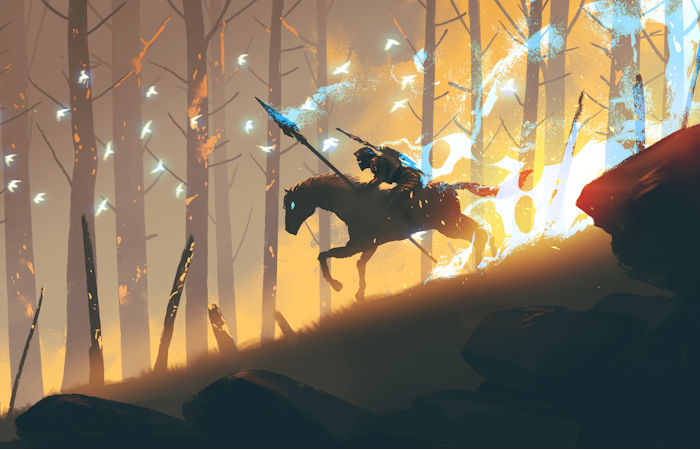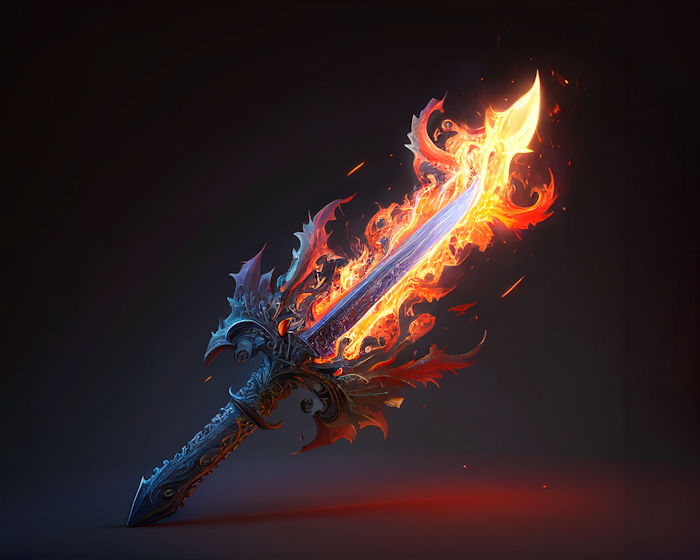Four Magical Treasures Of Tuatha De Danann
A. Sutherland - AncientPages.com - Thousands of years ago, a god-like race known as Tuatha de Danann - the people of the gods of Dana as they were called - came through the air to Ireland.
The arrival of Tuatha de Danaan. Credit: Adobe Stock - danielegay
They came from the north, where they had four cities located on four islands in the North. In these legendary cities - great Falias, shining Gorias, Finias, and rich Murias located to the south - Tuatha de Danann fought their battle for learning.
They brought to Ireland four magical treasures mentioned in early Irish literature.
In "The story of the Tuatha de Danaan," Lady I. A. Gregory writes that "in those cities they had four wise men to teach their young men skill and knowledge and perfect wisdom: Senias in Murias; and Arias, the fair-haired poet, in Finias; and Urias of the noble nature in Gorias; and Morias in Falias itself. And they brought from those four cities their four treasures: a Stone of Virtue from Falias, that was called the Lia Fail, the Stone of Destiny; and from Gorias they brought a Sword; and from Finias a Spear of Victory; and from Murias the fourth treasure, the Cauldron that no company ever went away from unsatisfied..." 1
However, some sources state that Tuatha de Danann brought the treasures from the Celtic Otherworld. Each one of the sacred items was unique, identified with an element, and possessed magical powers.
According to a late medieval Irish manuscript, "Yellow Book of Lecan" (1391 and 1401), the four treasures were: Lia Fáil Stone, the Spear of Lugh, the Sword of Nuada, and the Cauldron of the Dagda.
Stone Of Fál (Lia Fáil)
The Stone of Destiny (Lia Fáil) at the Hill of Tara, once used as a coronation stone for the High Kings of Ireland. Image credit: August Schwerdfeger - CC BY 4.0
From Falias was brought the stone of Fal (Lia Fal) - the stone of Destiny, which was believed to be located near the hill of Tara in County Meath and called the name of every king of Ireland. It was also claimed to keep Ireland above the waves and sea level. The master of his wisdom was Morfessa (or Fessus) of Falias.
The Lia Fáil was thought to be magical: when the rightful High King of Ireland put his feet on it, the stone was said to roar in joy. The stone could also rejuvenate the king and endow him with a long and successful reign. According to Lebor Gabála Érenn, (literally "The Book of the Taking of Ireland"), known in English as The Book of Invasions, Cúchulainn split it with his sword when it failed to cry out under his protégé, Lugaid Riab nDerg; also a legend says that it happened once again at the coronation of Brian Boru in 1002.
Sword Of Lugh - "Invincible Spear”
The second treasure of the Danaans was the invincible sword of Lugh of the Long Arm, which came from the city of Findias. It was also called the “Spear of Victory” and was identified with fire. It had properties similar to the Sword of King Nuada – when thrown, it momentarily hit its target.
Invincible Spear of Lugh. Credit: Adobe Stock - Vector Tradition
Lugh's magical weapons had special powers. Credit: Adobe Stock - grandfailure
However, Lugh possessed not only the Invincible Spear but also several magical weapons. It is said that the Lugh's Spear never missed its target and was so bloodthirsty it would often try to fight without anyone wielding it. The weapon was blazingly hot and became hotter the longer it was used. It was stored in a vat of water at night to keep it from catching fire and scorching the earth.
The Lugh of the Long Arms (sometimes, “Long Hands” or even “Artful Hands”) was the Celtic sun god associated with crafts and smiths, who worked with fire, and his weapons were considered to have magical powers.
The Blacksmith of Falias forged the magical spear for Lugh to use against Balor. The one who held it won every battle – neither the army nor the hero ever resisted it.
Sword Of Nuada - "Shining Sword"
This magical weapon, known as the "Sword of Light" (claideb/claiomh solais) is also one of the lost Four Treasures of Tuatha de Danann. It was made in the northern city of Gorias, one of Tuatha de Danann's legendary cities, ruled by a master of wisdom, Uiscas, who crafted the sword.
No one ever escaped from it once it was drawn from its sheath, and no one could resist it. The Tain legend also describes the sword as "Nuadu's Cainnel"—a glowing bright torch.
The shining sword of King Nuada. Credit: Adobe Stock - Eduardo
The sword was brought to Ireland by King Nuada of the Tuatha de Danann, who became famous when he led his people in the Battle of Moytura (Cath Maige Tuired, meaning ‘the plain of pillars/ towers’) against the Fir Bolg, who ruled Ireland at the time. We do not know the true meaning of the magical "Sword of Nuada." Still, based on some interpretations and the sword's obvious abilities (stabbing, cutting, slicing), it may symbolize justice, law, and truth.
It can also mean the punishment of Ireland’s enemies during the conflict.
However, the sword's light or shining can be considered as "enlightenment, illumination ": sacred wisdom and knowledge.
The Cauldron Of The Dagda
Celtic myths and legends mention many magic vessels. One known as the "Cauldron of the Dagda" or the Cauldron of Plenty, or Undry, was a magical vessel that never ran dry because it was bottomless. It provided a never-ending supply of food and drink to all who deserved it. It was also a great treasure of the Tuatha Dé Danann.
The magical cauldron of Dagda was never empty. Credit: Adobe Stock - Natalia
The magical cauldron, which was the fourth treasure of Tuatha de Danann, also had another ability; it could revive dead warriors. Therefore, it served as a tool to provide rebirth and regeneration. The Cauldron of Dagda - made in the city of Murias - was one of the special attributes of Dagda - "Good God" (also "Great Father' and the "Mighty One of Knowledge." Dagda was considered the greatest of the Irish gods.
It was said that no company ever went away from Cauldron (coire) of the Dagda unsatisfied.
Updated on January 12, 2024
Written by – A. Sutherland AncientPages.com Staff Writer
Copyright © AncientPages.com All rights reserved. This material may not be published, broadcast, rewritten or redistributed in whole or part without the express written permission of AncientPages.com
Expand for references- Lady I. A. Gregory, The story of the Tuatha de Danaan
Daimler M., The Treasure of the Tuatha De Danann
Trident Books, Irish Gods
More From Ancient Pages
-
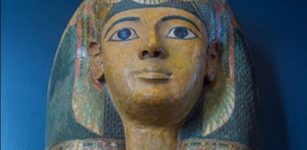 Ancient Egyptians Knowledge Of Psychiatry – Importance Of The Sorcerer And The Mysterious Zar Dance
Ancient History Facts | Apr 24, 2020
Ancient Egyptians Knowledge Of Psychiatry – Importance Of The Sorcerer And The Mysterious Zar Dance
Ancient History Facts | Apr 24, 2020 -
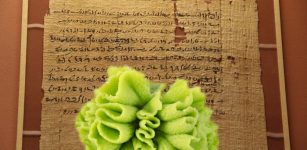 Wasabi Plant Can Save Ancient Bio-Deteriorated Papyrus
Scripts, Paintings & Inscriptions | Apr 4, 2024
Wasabi Plant Can Save Ancient Bio-Deteriorated Papyrus
Scripts, Paintings & Inscriptions | Apr 4, 2024 -
 The Face Of The Amarakarei – Remarkable Enormous Face Caved Into Stone Cliffs In Peru
Places | Nov 20, 2015
The Face Of The Amarakarei – Remarkable Enormous Face Caved Into Stone Cliffs In Peru
Places | Nov 20, 2015 -
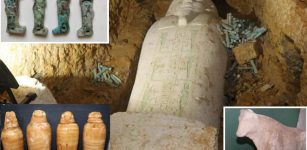 Hundreds Of Marvelous Ancient Egyptian Treasures Found Inside Tombs In Minya
Archaeology | Oct 27, 2020
Hundreds Of Marvelous Ancient Egyptian Treasures Found Inside Tombs In Minya
Archaeology | Oct 27, 2020 -
 Smallest Arm Bone In Human Fossil Record Illuminates Homo Floresiensis Origin
Archaeology | Aug 7, 2024
Smallest Arm Bone In Human Fossil Record Illuminates Homo Floresiensis Origin
Archaeology | Aug 7, 2024 -
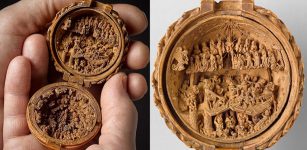 Rare Gothic Boxwood Miniatures – Precious Marvel Of Human Ingenuity
Artifacts | Dec 30, 2019
Rare Gothic Boxwood Miniatures – Precious Marvel Of Human Ingenuity
Artifacts | Dec 30, 2019 -
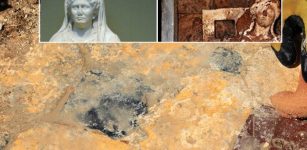 Sun Disk Unearthed On 3,500-Year-Old Rock Altar In Thracian Settlement, Edirne, NW Turkey
Archaeology | Sep 26, 2020
Sun Disk Unearthed On 3,500-Year-Old Rock Altar In Thracian Settlement, Edirne, NW Turkey
Archaeology | Sep 26, 2020 -
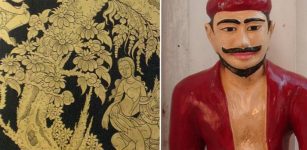 Zawgyi – Demi-God And Alchemist With Miraculous Powers In Burmese Mythology And Folklore
Featured Stories | Aug 17, 2021
Zawgyi – Demi-God And Alchemist With Miraculous Powers In Burmese Mythology And Folklore
Featured Stories | Aug 17, 2021 -
 Lost Since 1362: Researchers Discover The Church Of Rungholt – A Sunken Medieval Trading Place
Archaeology | May 25, 2023
Lost Since 1362: Researchers Discover The Church Of Rungholt – A Sunken Medieval Trading Place
Archaeology | May 25, 2023 -
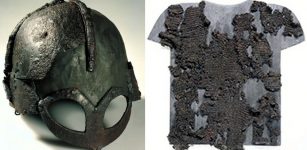 Unique Gjermundbu Helmet – Why Has Only One Viking Age Helmet Been Found In Scandinavia?
Artifacts | Mar 23, 2018
Unique Gjermundbu Helmet – Why Has Only One Viking Age Helmet Been Found In Scandinavia?
Artifacts | Mar 23, 2018 -
 Philippine Ayta People Have The Highest Level Of Denisovan DNA – New Study
Archaeology | Aug 12, 2021
Philippine Ayta People Have The Highest Level Of Denisovan DNA – New Study
Archaeology | Aug 12, 2021 -
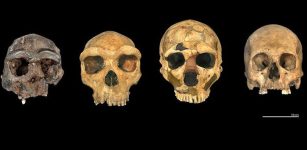 Mystery Of The Boxgrave Humans – Fossils In The UK Reveal How Ancient Europeans Were Connected
Archaeology | Nov 15, 2022
Mystery Of The Boxgrave Humans – Fossils In The UK Reveal How Ancient Europeans Were Connected
Archaeology | Nov 15, 2022 -
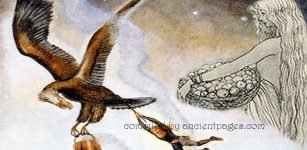 Abduction Of Idun, Goddess-Keeper Of Golden Juvenile Apples In Norse Mythology
Featured Stories | Nov 16, 2019
Abduction Of Idun, Goddess-Keeper Of Golden Juvenile Apples In Norse Mythology
Featured Stories | Nov 16, 2019 -
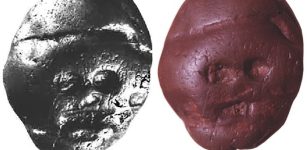 Why Are Manuports Like The Makapansgat Cobble Interesting Archaeological Artifacts?
Artifacts | Mar 15, 2024
Why Are Manuports Like The Makapansgat Cobble Interesting Archaeological Artifacts?
Artifacts | Mar 15, 2024 -
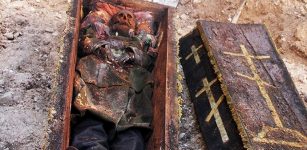 Dispute Between Russia And Poland Over Discovery Of Czarist Officer’s Corpse In Turkey
Archaeology | Apr 10, 2018
Dispute Between Russia And Poland Over Discovery Of Czarist Officer’s Corpse In Turkey
Archaeology | Apr 10, 2018 -
 Rare Fossil Of A Dog-Sized Horned Dinosaur From ‘Lost Continent’ Identified By British Scientist
Archaeology | Dec 5, 2015
Rare Fossil Of A Dog-Sized Horned Dinosaur From ‘Lost Continent’ Identified By British Scientist
Archaeology | Dec 5, 2015 -
 Sacred ‘Sign Posts’ Of The Inuit People
Ancient History Facts | Sep 4, 2018
Sacred ‘Sign Posts’ Of The Inuit People
Ancient History Facts | Sep 4, 2018 -
 On This Day In History: Isaac Asimov Creator Of Science Fiction Was Born – On Jan 2, 1920
News | Jan 2, 2017
On This Day In History: Isaac Asimov Creator Of Science Fiction Was Born – On Jan 2, 1920
News | Jan 2, 2017 -
 Neanderthals Died Out 40,000 Years Ago, But There Has Never Been More Of Their DNA On Earth
Archaeology | Sep 6, 2022
Neanderthals Died Out 40,000 Years Ago, But There Has Never Been More Of Their DNA On Earth
Archaeology | Sep 6, 2022 -
 Secrets Of A Lake That Could Re-Write Ancient History Of America – Ancient Visitors From Distant Countries – Part 3
Civilizations | Jun 6, 2018
Secrets Of A Lake That Could Re-Write Ancient History Of America – Ancient Visitors From Distant Countries – Part 3
Civilizations | Jun 6, 2018




